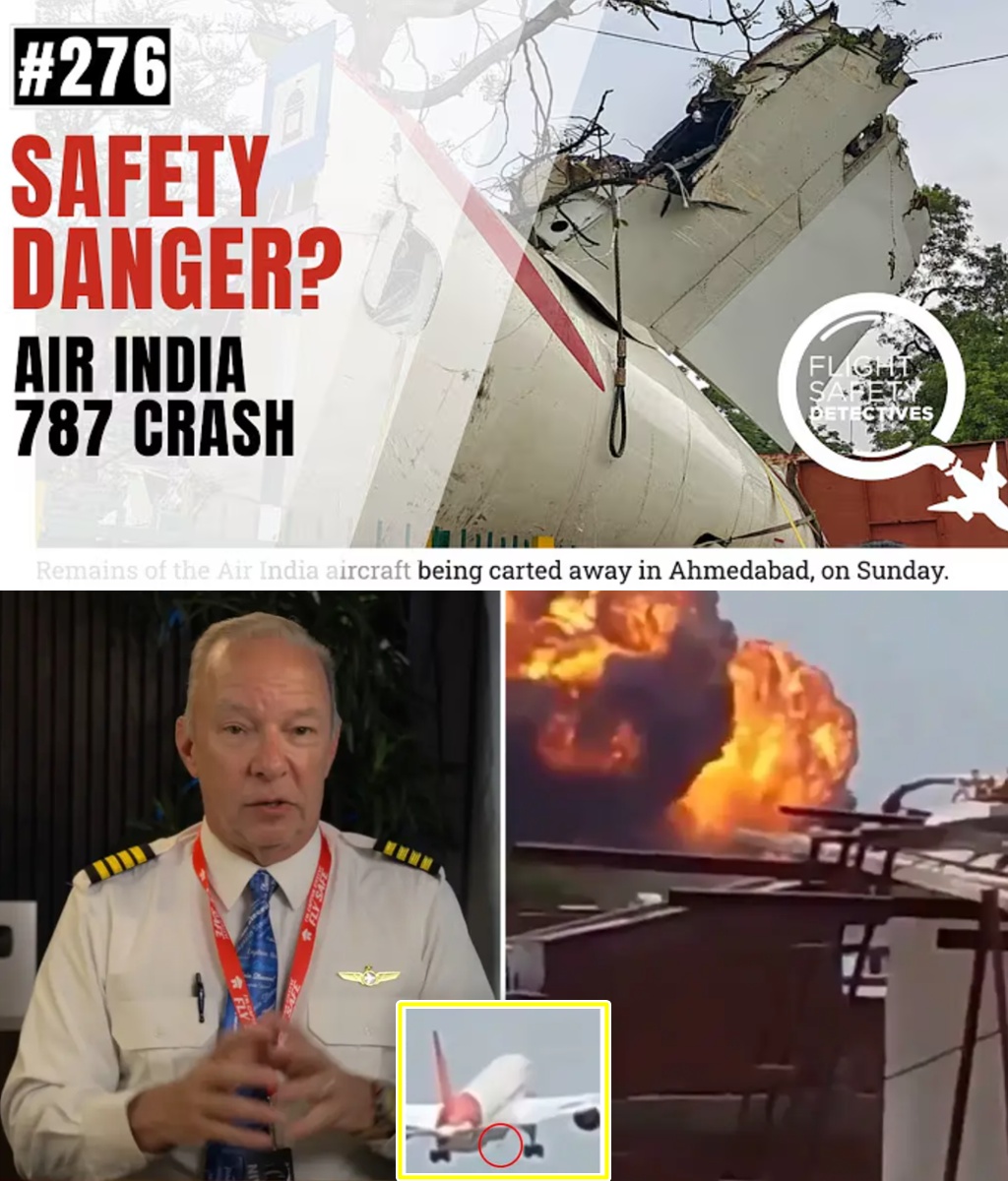Veteran aviation safety experts Greg Feith, John Goglia, and Todd Curtis have voiced growing concern over the lack of transparency and critical information emerging from the investigation into the fatal crash of an Air India Boeing 787 on June 12. Known for their deep experience in aircraft accident analysis, the trio finds the current situation not just unusual—but potentially dangerous for global aviation.
“Something isn’t adding up,” said Greg Feith. “This isn’t how professional investigations are supposed to be handled.”
🔍 A Fragmented Investigation Raises Red Flags
Perhaps most concerning is the separation of the two most vital pieces of evidence in any aircraft crash: the Flight Data Recorder (FDR) and the Cockpit Voice Recorder (CVR). According to the Flight Safety Detectives, the FDR has been sent to the United States for analysis, while the CVR remains in India.
This approach is highly unorthodox.
“You simply can’t fully understand what happened unless you analyze the FDR and CVR together,” explains Todd Curtis. “One tells you what the aircraft was doing, the other tells you what the pilots were experiencing. They’re two halves of the same truth.”
By analyzing the data separately, investigators risk missing the full picture, or worse, misinterpreting the sequence of events that led to the crash.
⚠️ A Government’s Rapid Reaction Fuels More Questions
Another eyebrow-raising development came immediately after the crash, when the Indian government ordered inspections of all Air India 787 aircraft. While the decision might seem prudent at first glance, aviation experts are asking:
“What exactly were they looking for?”
“Do they know something that hasn’t been disclosed to the global aviation community?”
“If it’s serious enough to warrant inspecting an entire fleet—why hasn’t that information been shared with the 1,000+ Boeing 787s flying worldwide?”
This swift response, absent of clear reasoning or supporting evidence, has only added to suspicions that safety-critical information may be intentionally withheld—either to protect reputations or avoid liability.
🧩 Evidence Lost, Scene Cleared—Too Soon?
Making matters worse is the apparent lack of on-site investigation at the crash scene. Photographic documentation and eyewitness accounts suggest that the wreckage was quickly removed, and no official images show investigators examining the aircraft remains in detail.
“That’s not how accident sites are treated,” says John Goglia, a former NTSB board member. “Physical evidence is everything. If you lose it, you lose your best chance at finding the truth.”
Without a proper scene examination, key forensic clues may now be lost forever, including fire patterns, impact markings, and component failures that could have explained what went wrong.
🎙️ Experts Break Down the Silence
On the latest episode of the Flight Safety Detectives podcast, Feith, Goglia, and Curtis bring their decades of crash investigation experience to bear, discussing how the lack of transparency, disjointed analysis, and hurried scene cleanup do not meet the standards of international aviation safety protocols.
“We’re not accusing anyone,” Goglia adds, “but when you don’t follow best practices, you leave room for speculation—and that’s dangerous in aviation.”
Their concerns are not rooted in conspiracy theories, but in hard-earned knowledge from investigating dozens of high-profile crashes. And their message is clear: without full disclosure and cooperation, the safety of other 787s—and the flying public—is put at risk.
As families wait for answers and airlines continue to operate hundreds of similar aircraft, the aviation world now asks: Why the silence? What is being hidden? And most importantly—will the truth ever come out?





